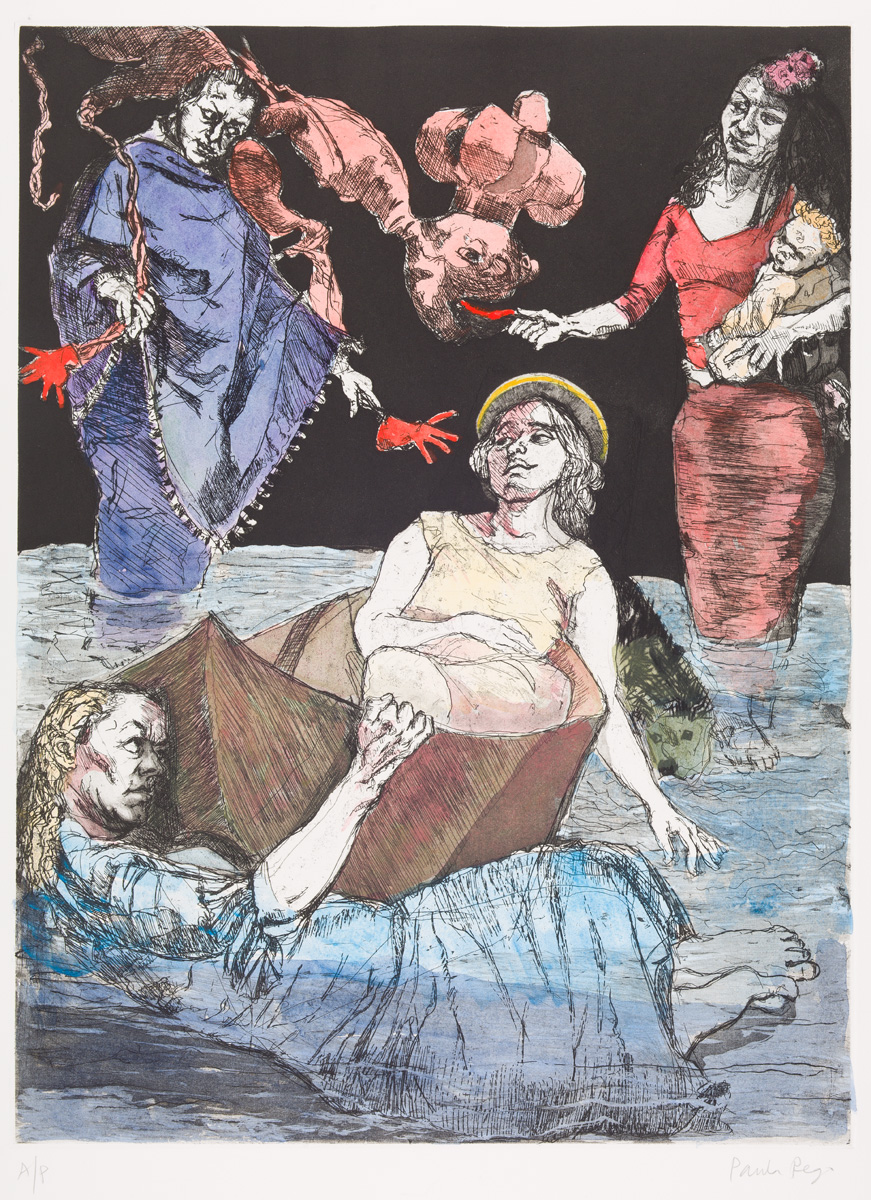The Guardians

Paula Rego (b. 1935 Lisbon, Portugal), The Guardians, 2009, Etching and aquatint, hand colored, 25 x 20 inches (63.5 x 50.8 cm), Museum Purchase, The Dorothy Johnston Towne (Class of 1923) Fund 2021.12.2
The Davis Museum recently acquired The Guardians by Paula Rego, which is the first work by the artist in the collections. Portuguese-born British artist Dame Paula Rego graduated from the Slade School of Fine Art in London in 1956. A renowned member of the Royal Academy, Rego was the first artist-in-residence at the National Gallery in London. She was bestowed the honors of Grand Cross of the Order of Saint James of the Sword by the President of Portugal in 2004 and Dame of the British Empire by Queen Elizabeth II in 2010. Rego draws inspiration from the twentieth-century Surrealist movement to incorporate elements of magical realism into her paintings and prints. She explores feminist themes in narrative scenes that place women in fantastical situations often inspired by fairy tales.
The Guardians is one of the six etchings related to—but not included in—Rego’s six-etching portfolio, The Curved Planks. All twelve etchings were inspired by a fable written by French poet Yves Bonnefoy. In the fable, an orphaned boy convinces a giant to take him across a marshy river in a boat made of curved planks. The giant explains the words “father” and “mother” to the boy, and the boy asks the giant to become his father. As the giant and boy go across the river, the boat sinks under the weight of the two and they are forced to swim. The Guardians does not portray a specific scene from the story, instead focusing on the giant, who is presented in the guise of St. Christina, the patron saint of mental illness. Leisurely sitting in the boat that appears throughout the series, she stares off into the distance, seemingly unaware of the figures surrounding her. The woman on the right holds a baby, who may be a reference to the boy in Bonnefoy’s fable. Yves Bonnefoy summarized the story as “a fable in which one sees a small child emerge from pre-language nothingness, seeking his very existence, and meeting someone with whom he faces a passage which will be at once death and victory over death.”1
1 Yves Bonnefoy, postscript to The Curved Planks, 2014, https://fortnightlyreview.co.uk/2013/08/curved-planks/